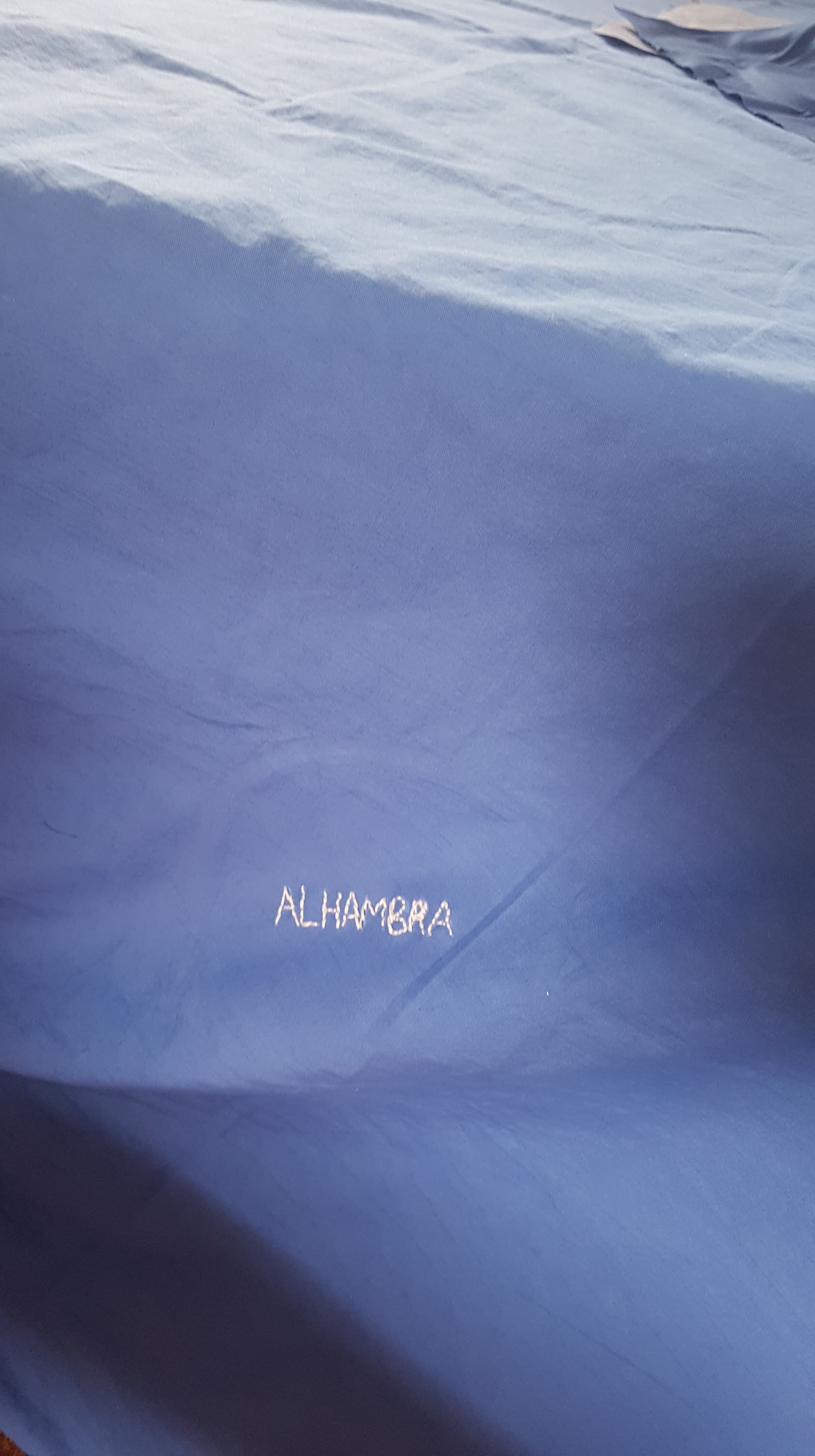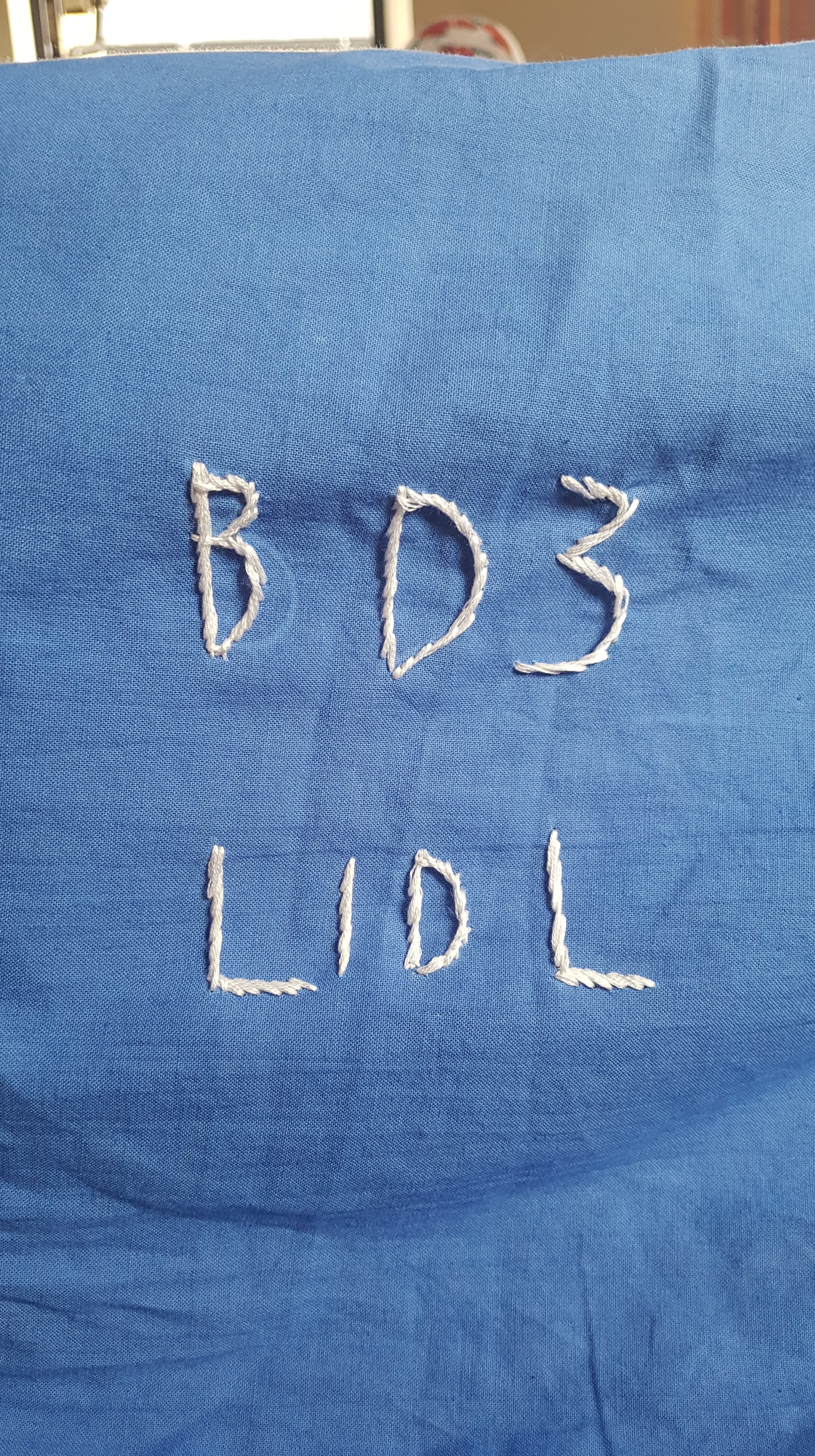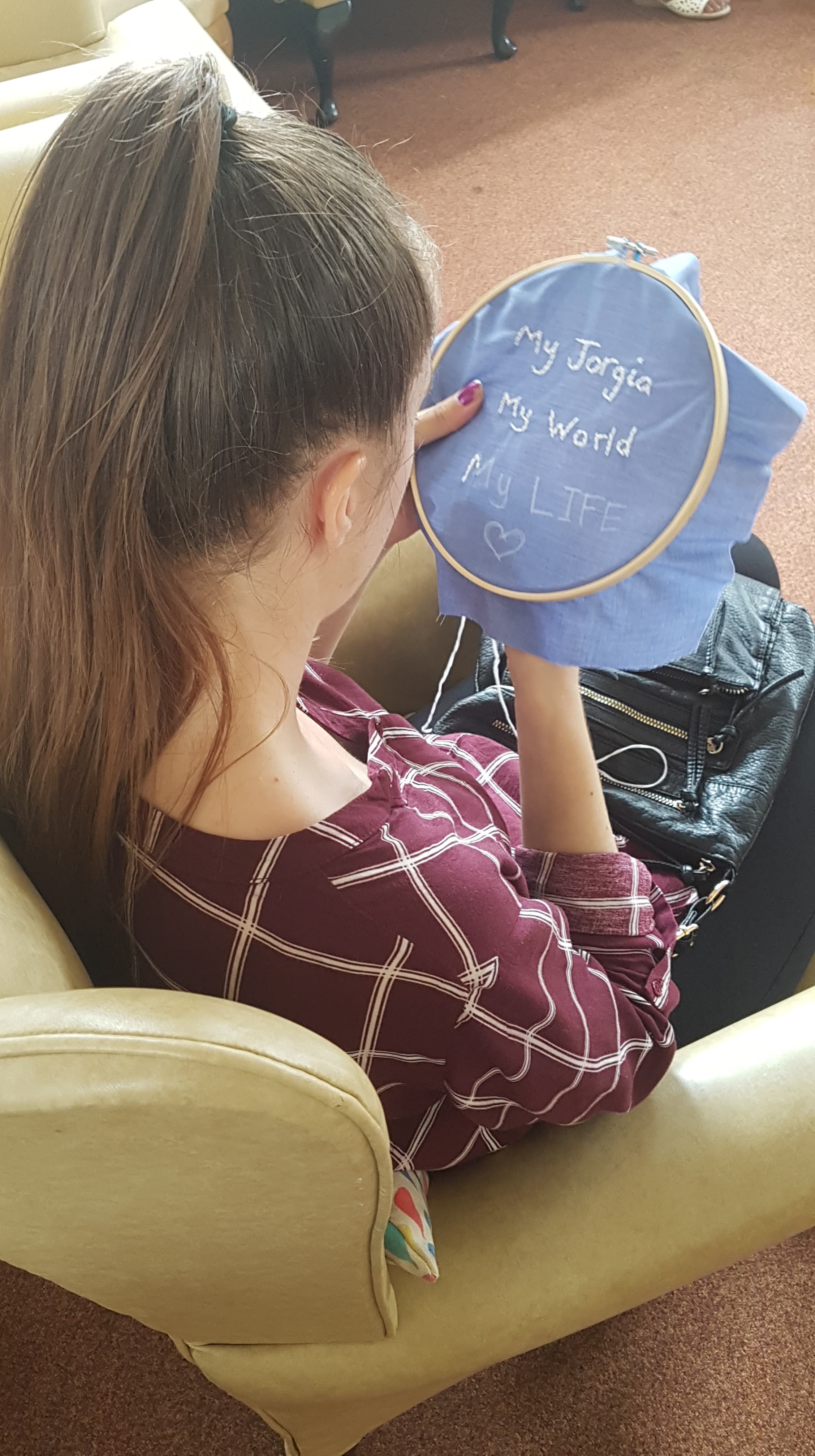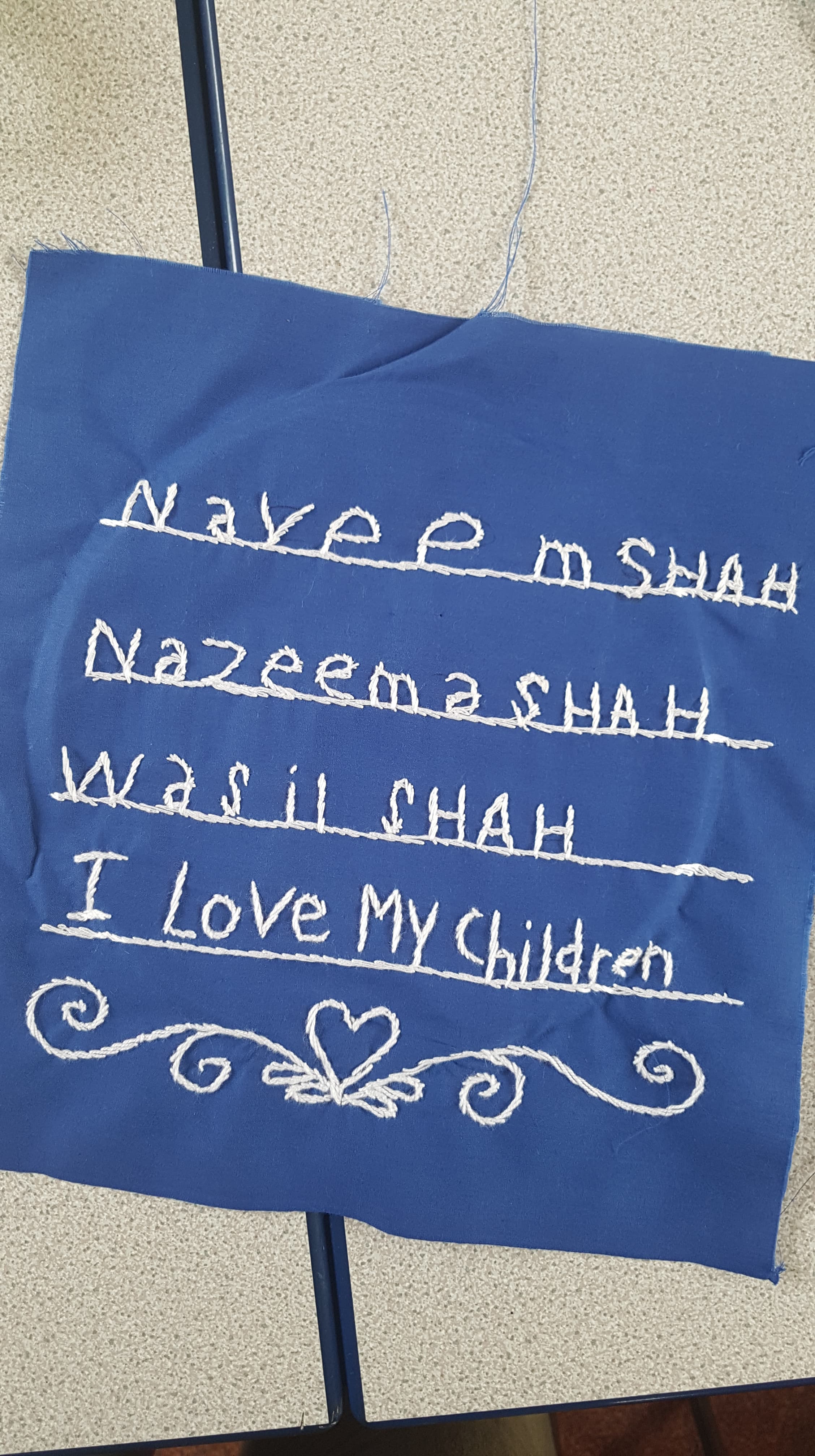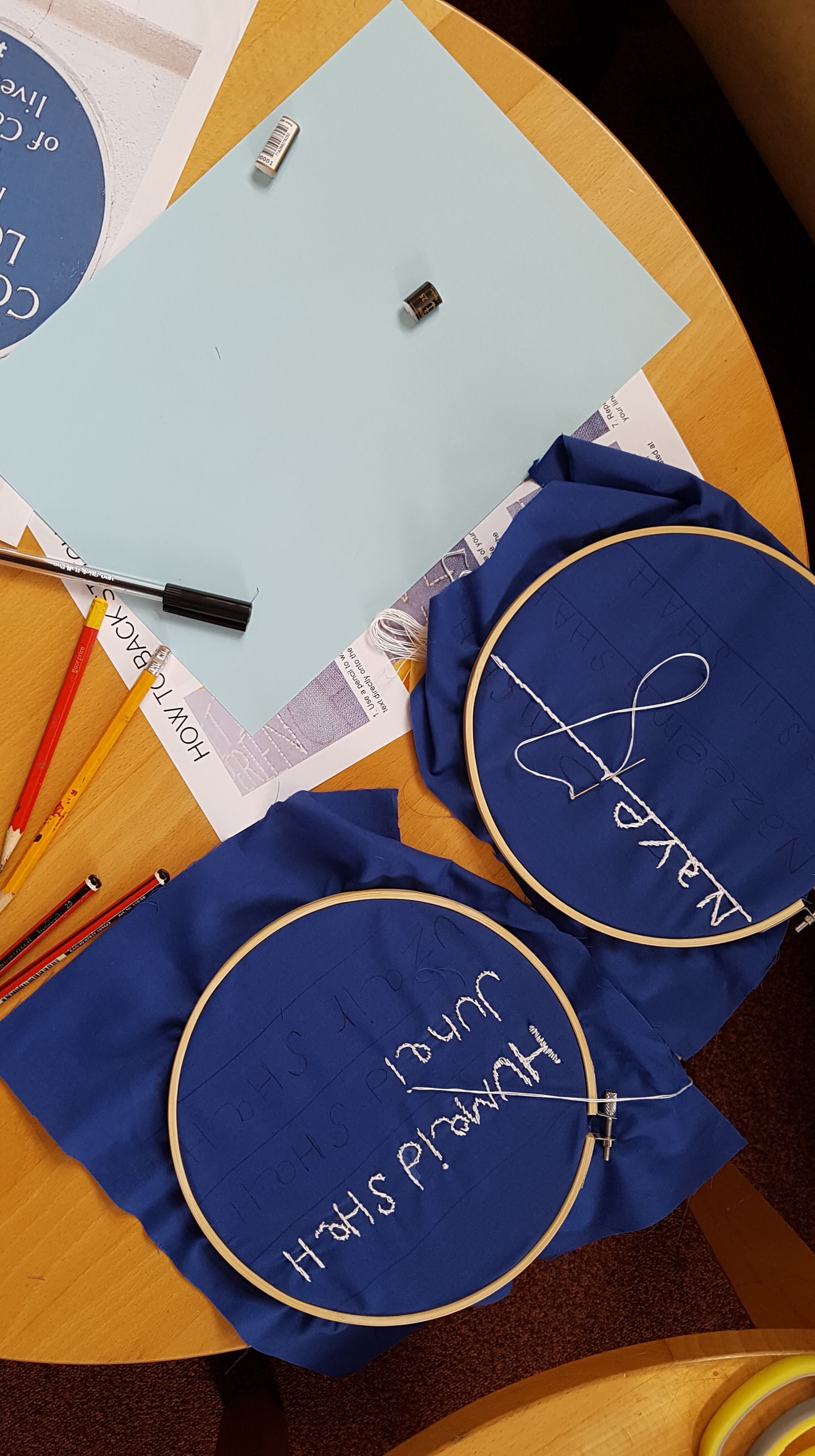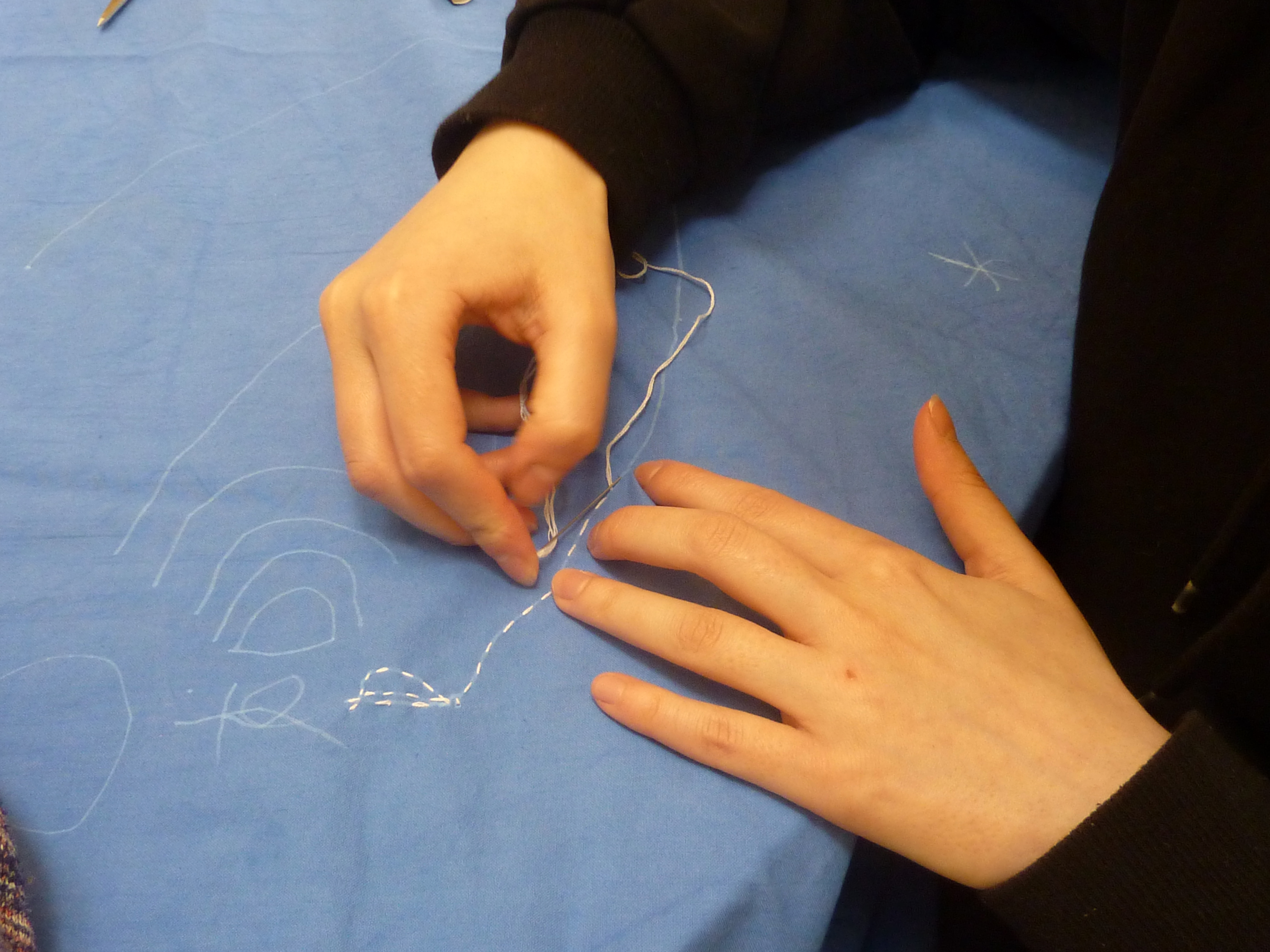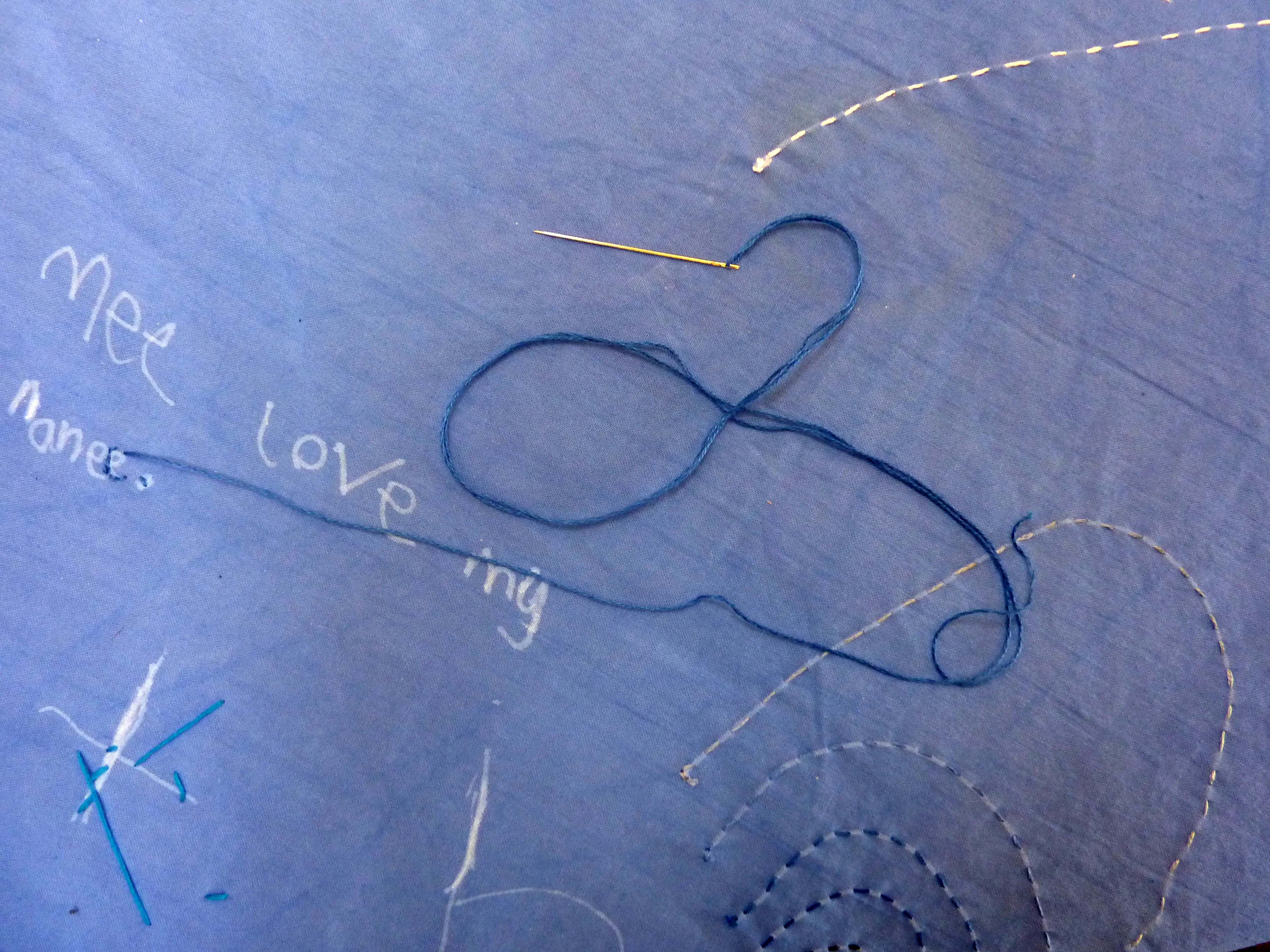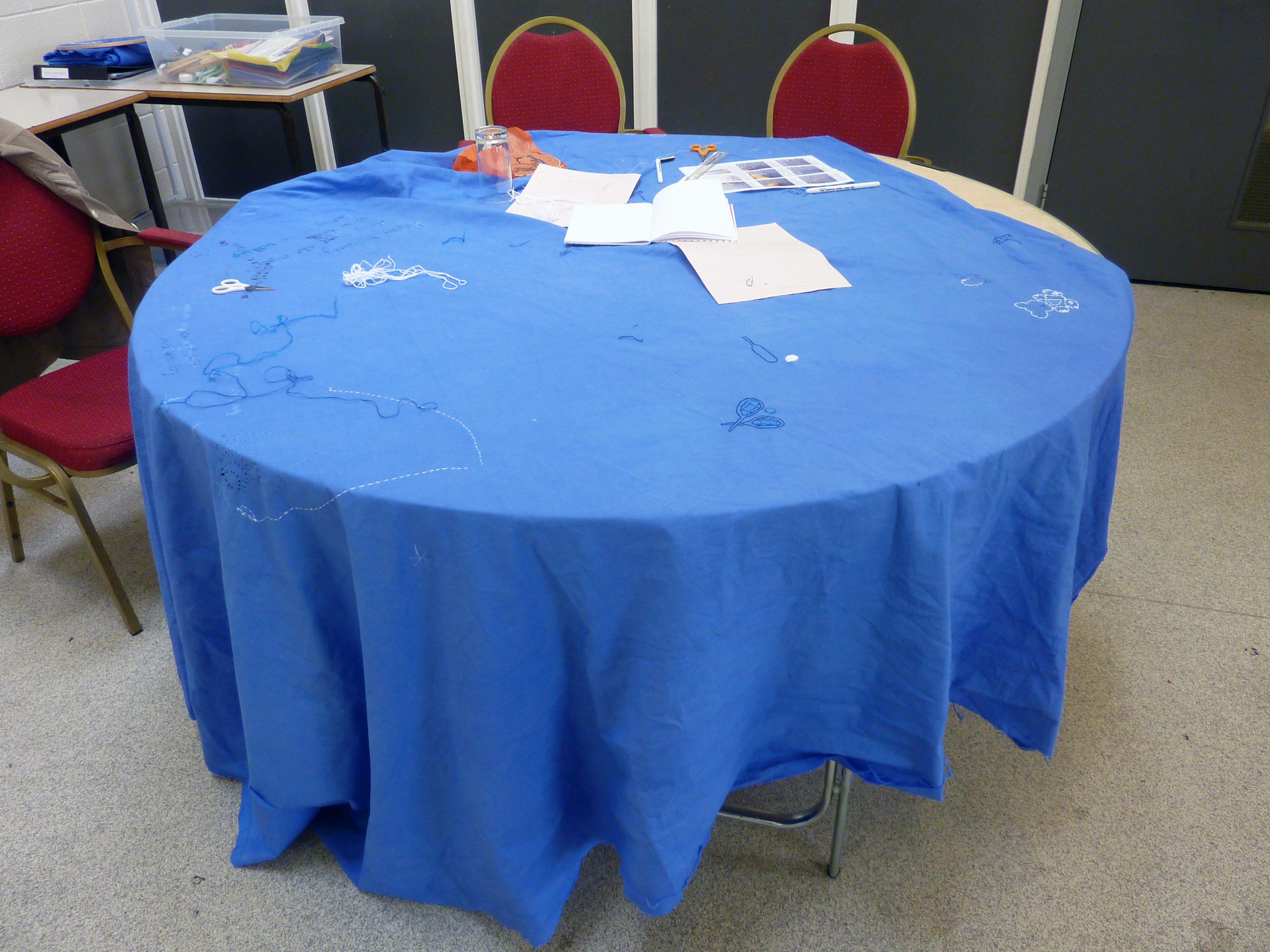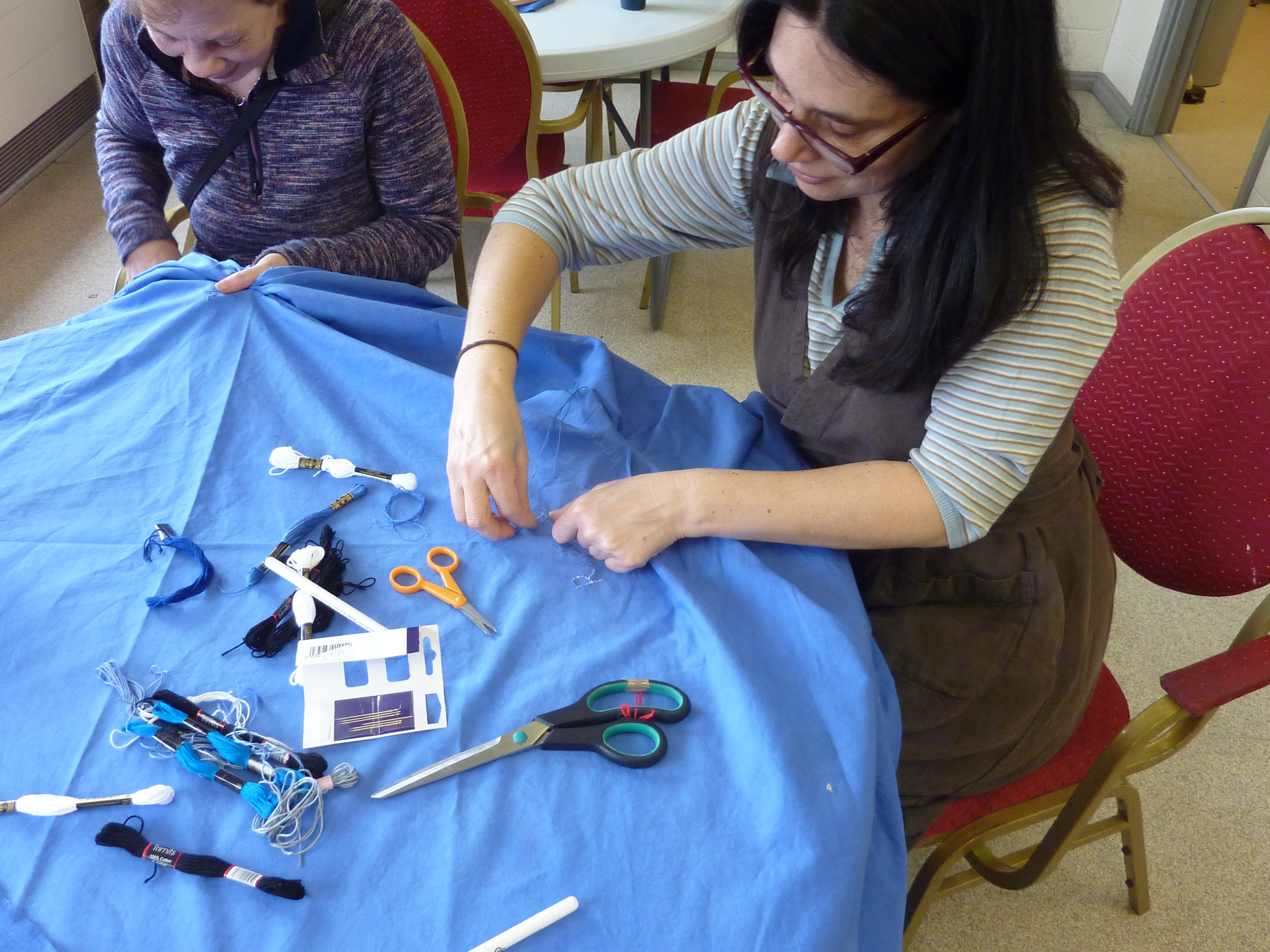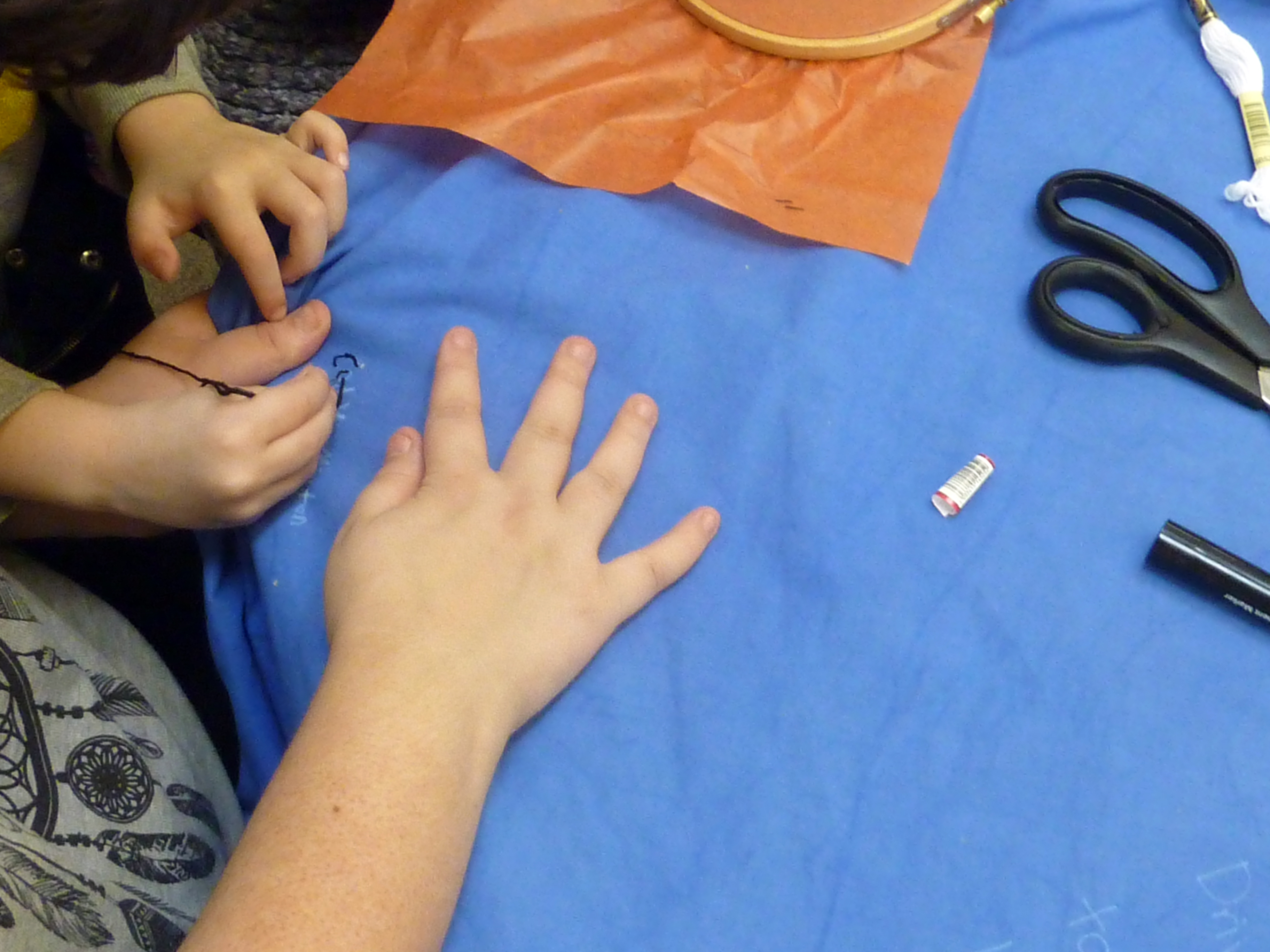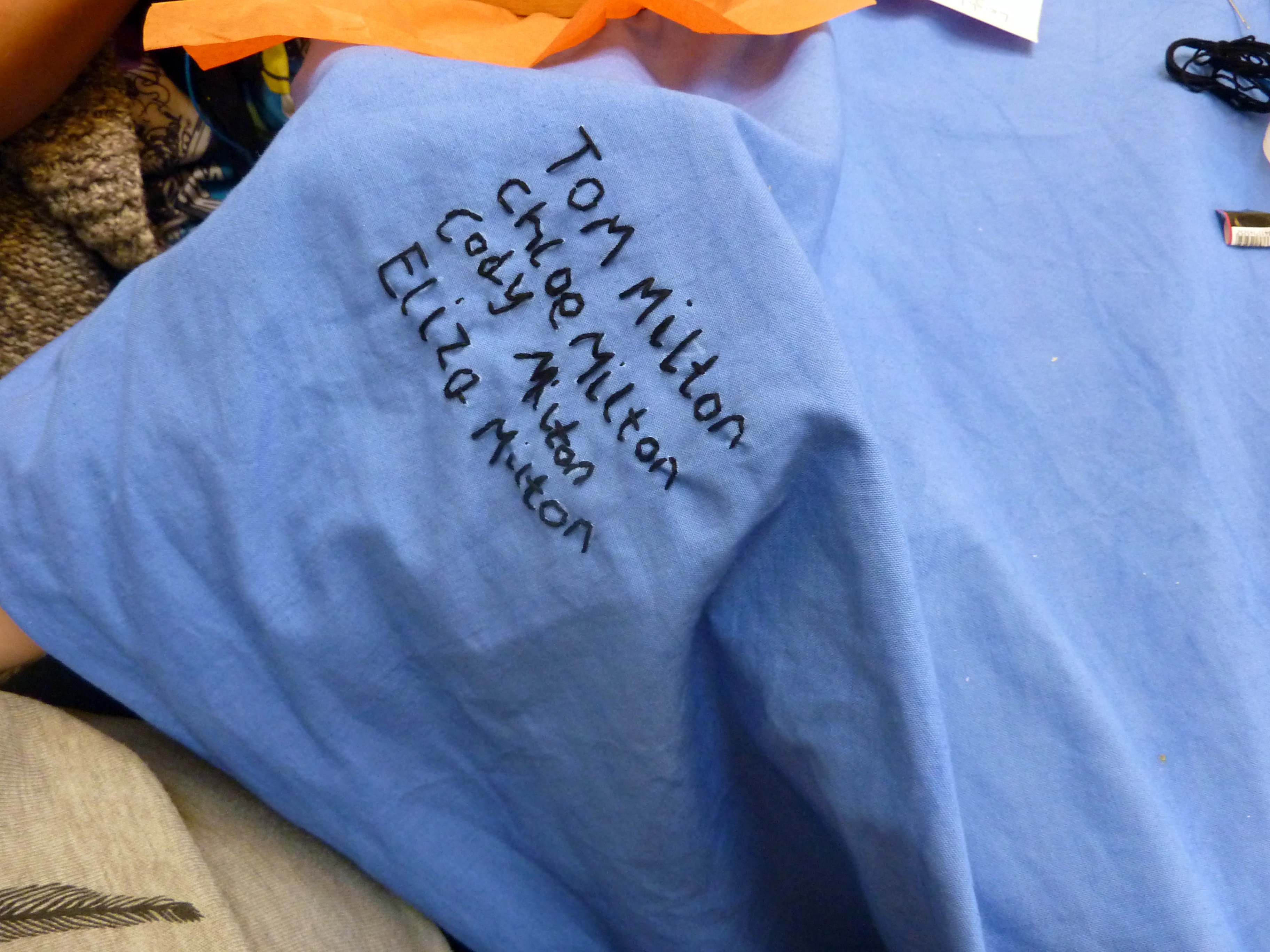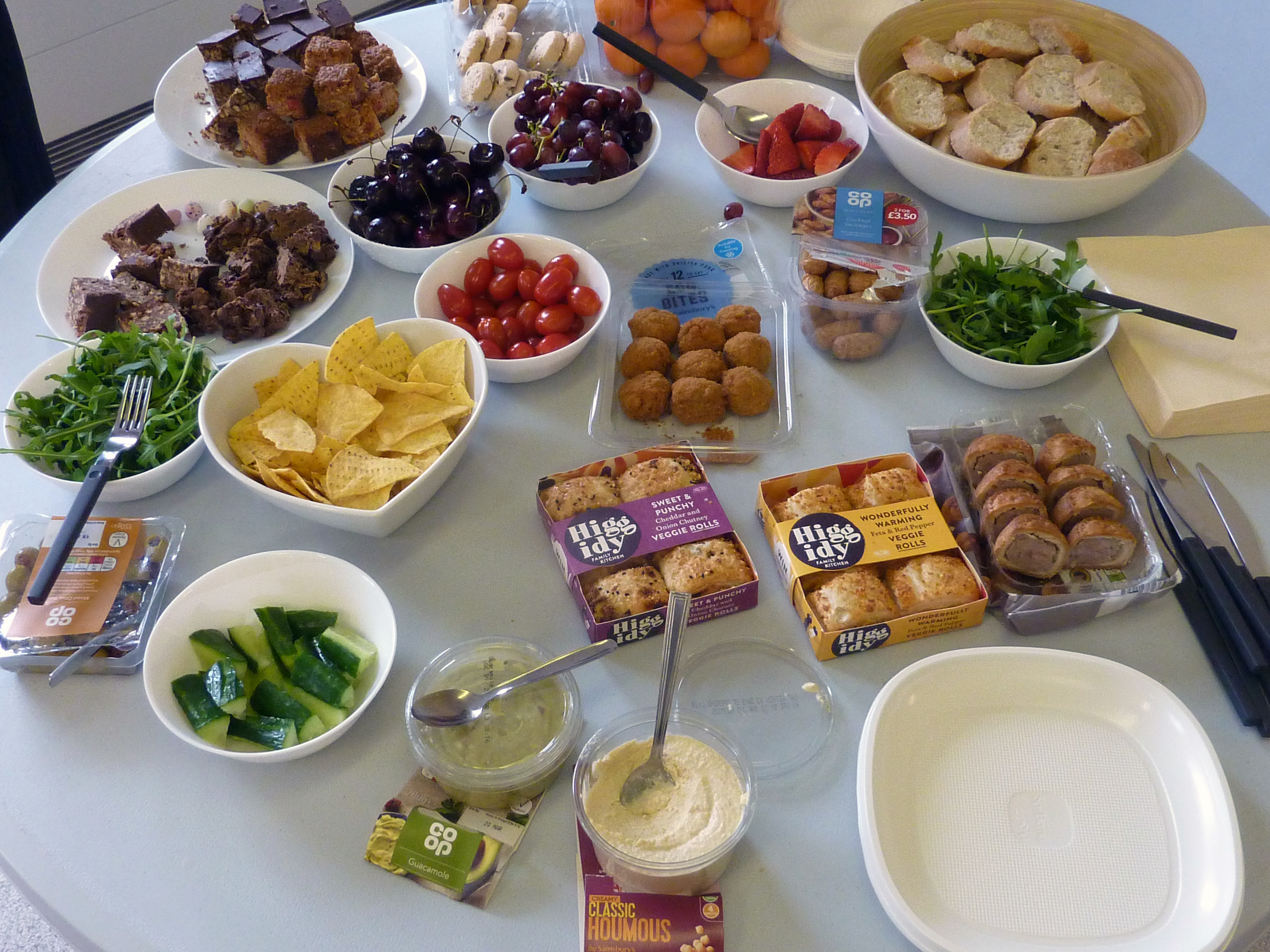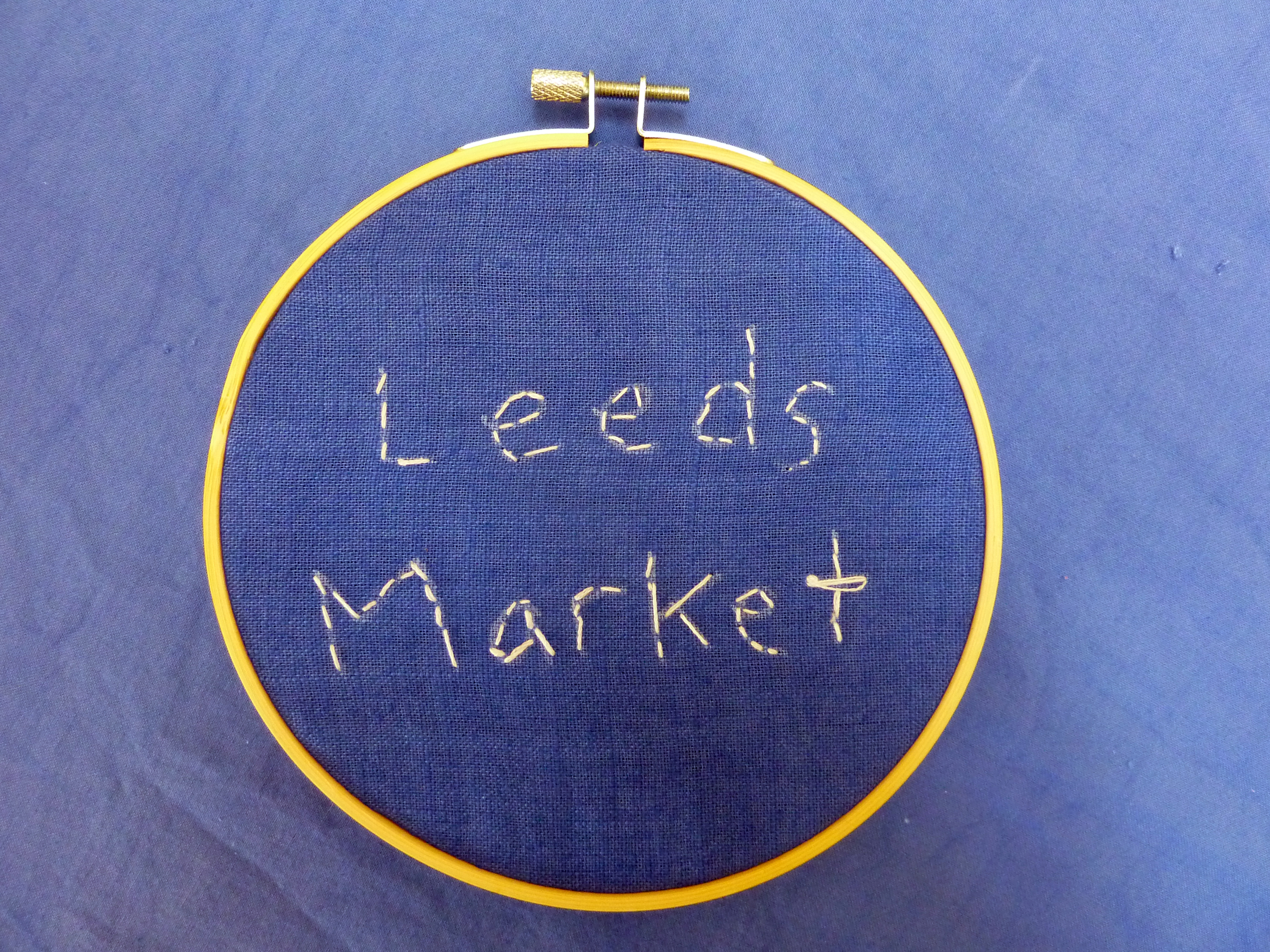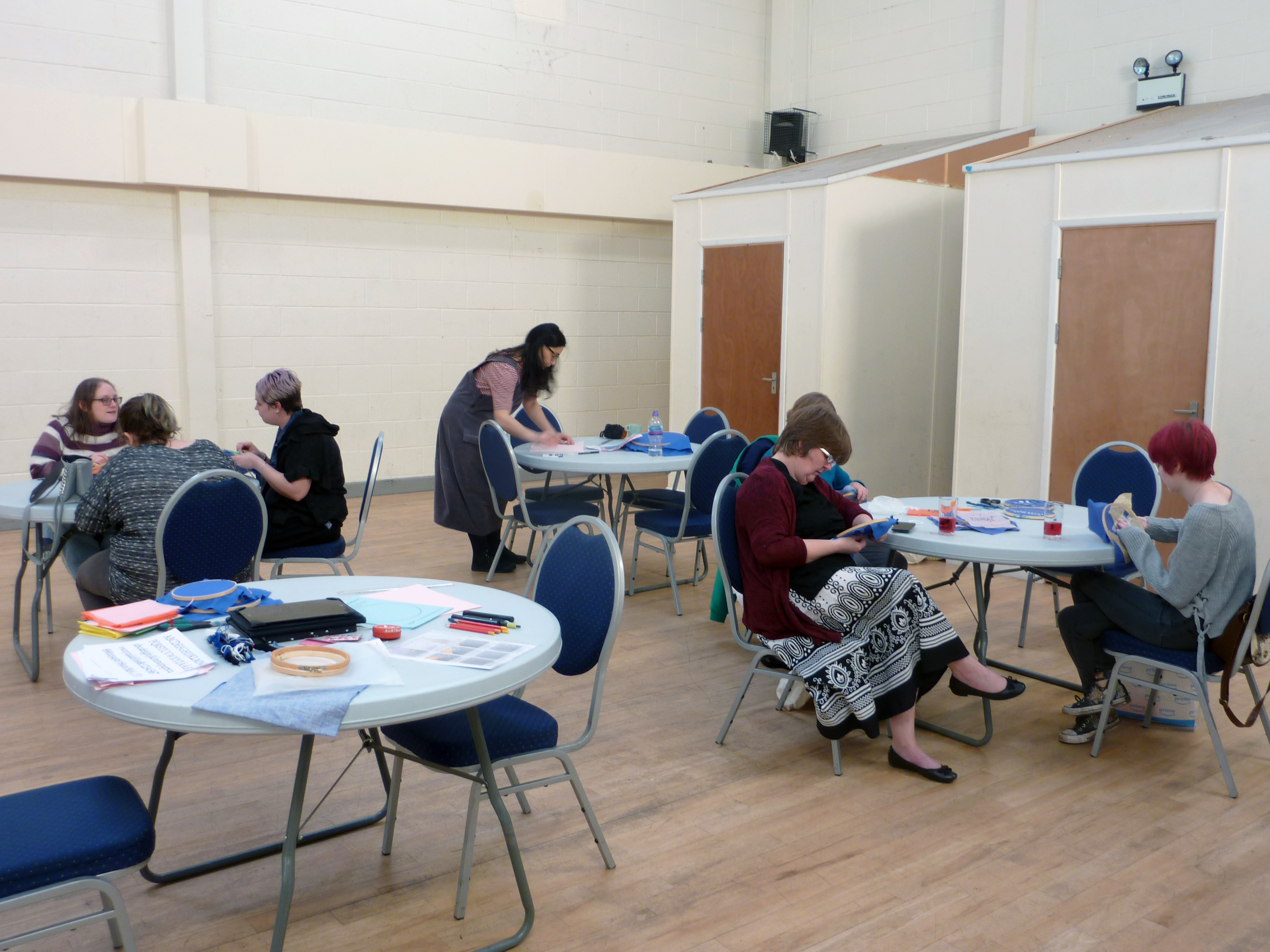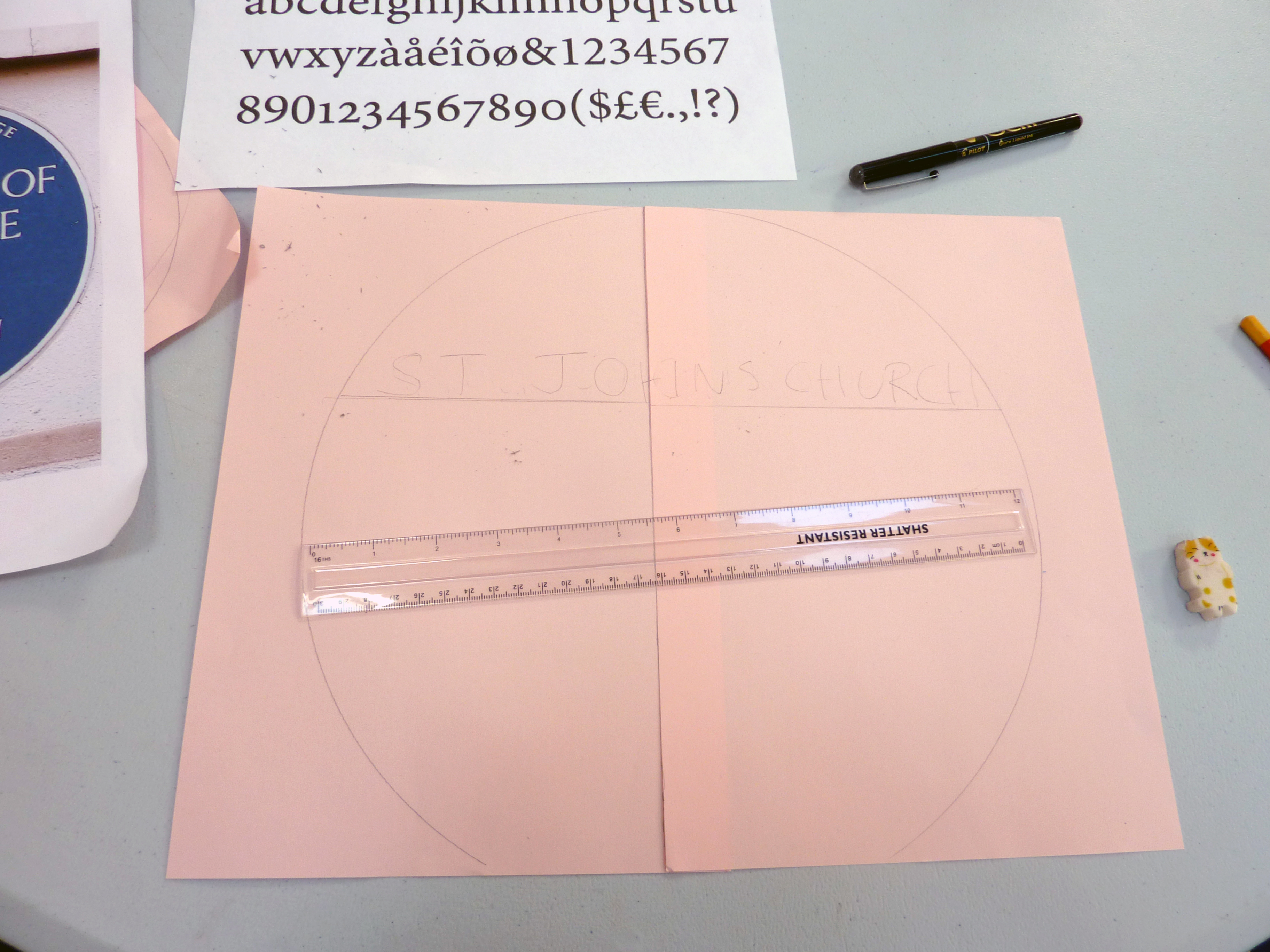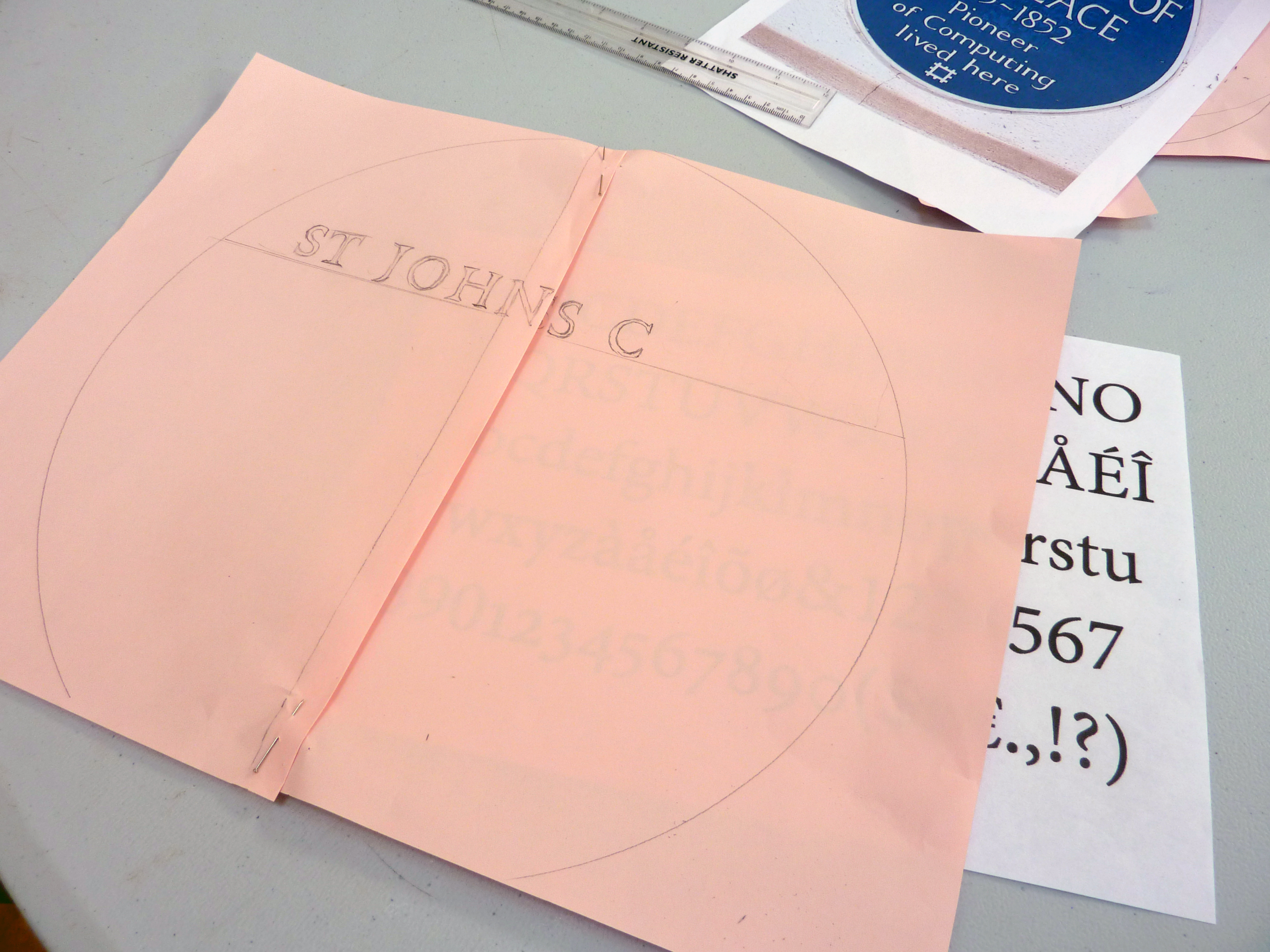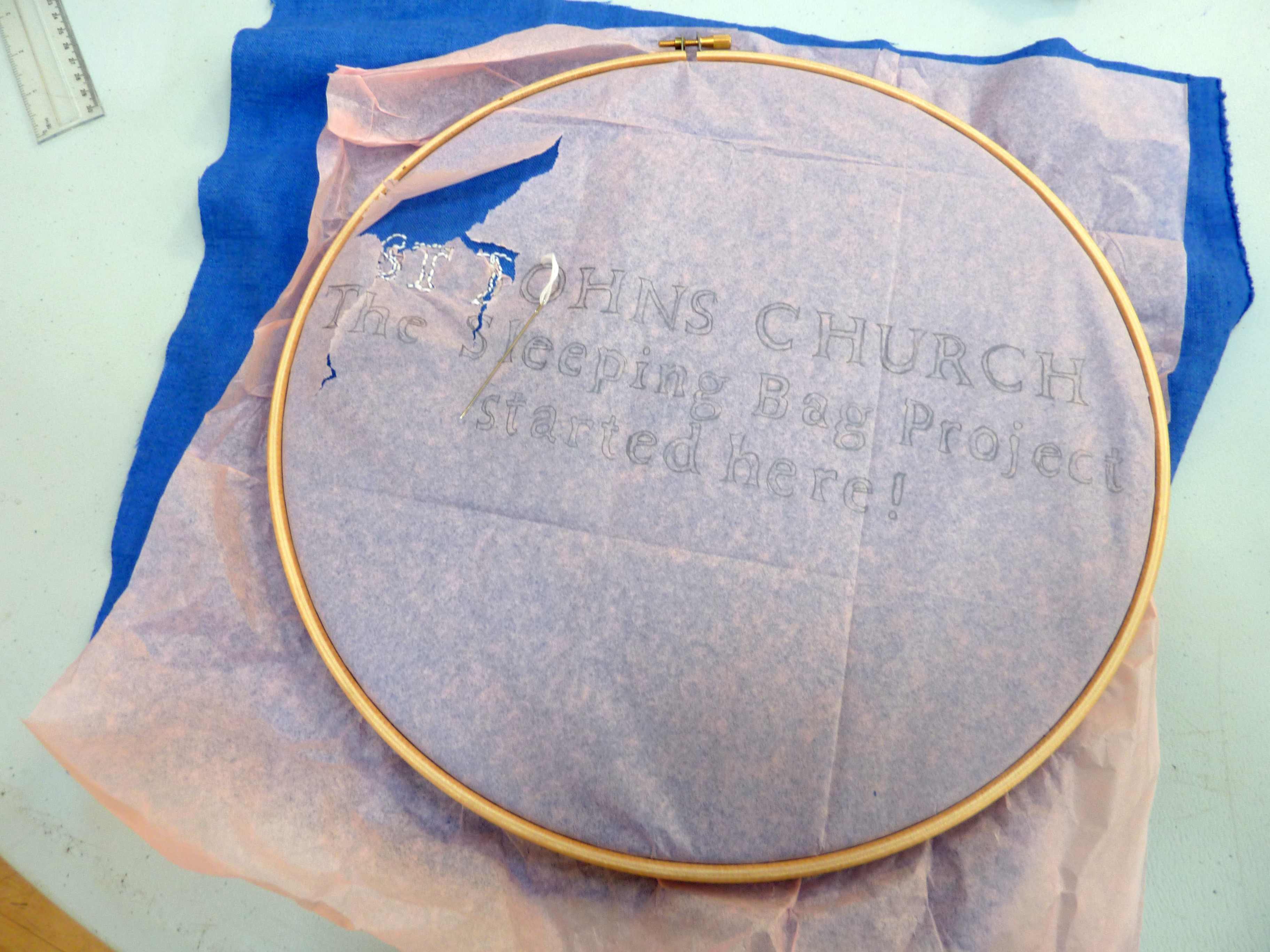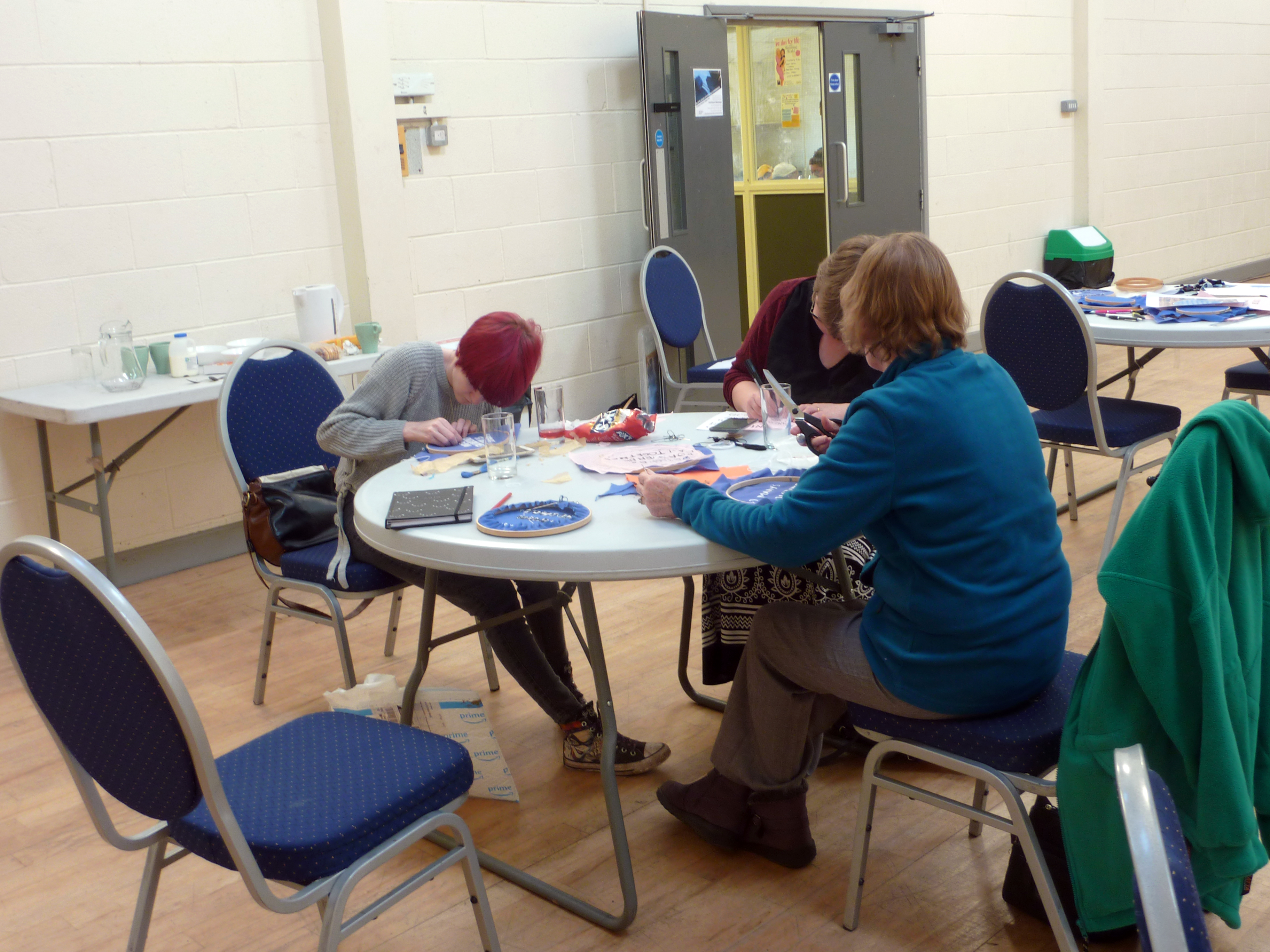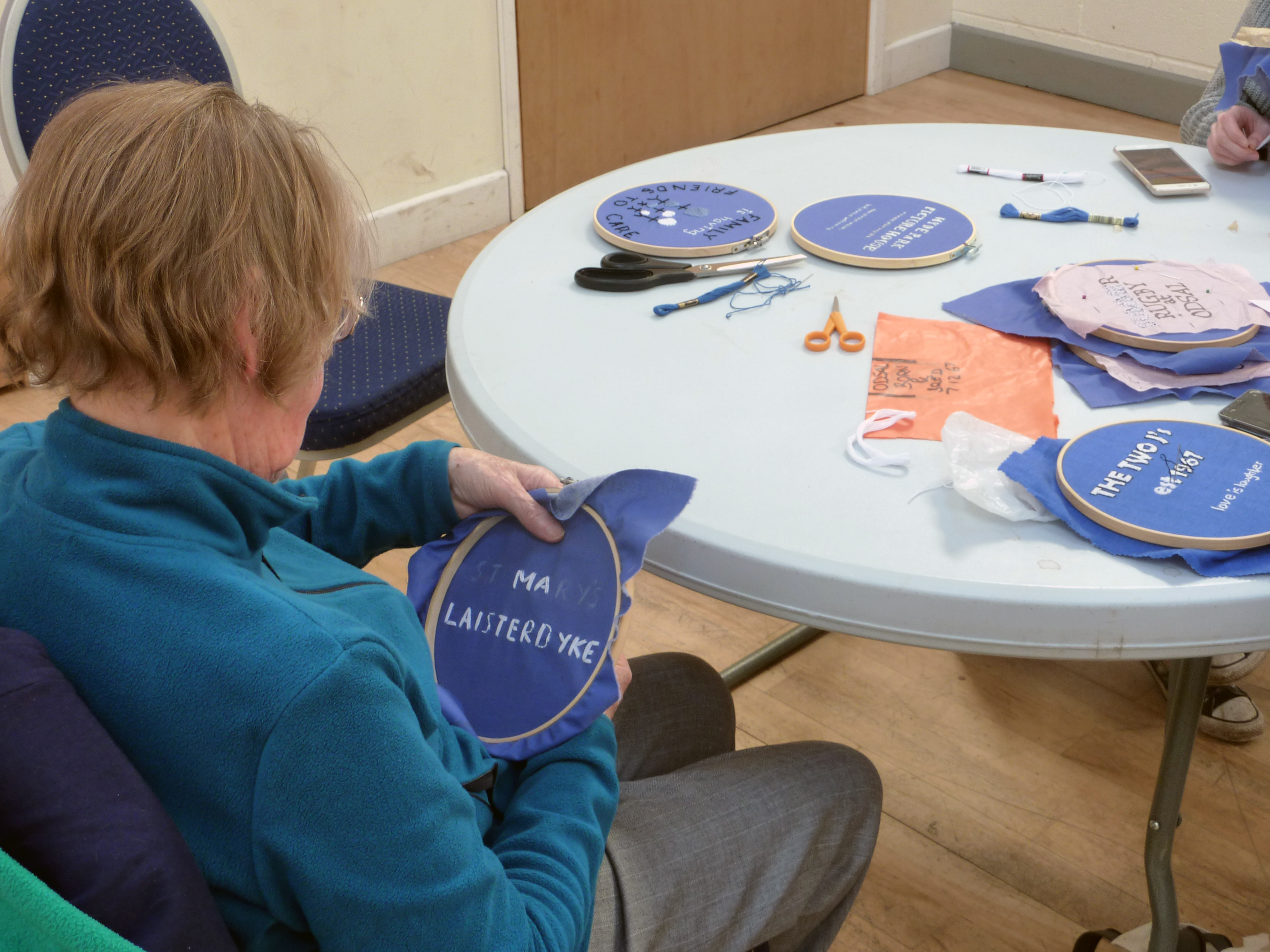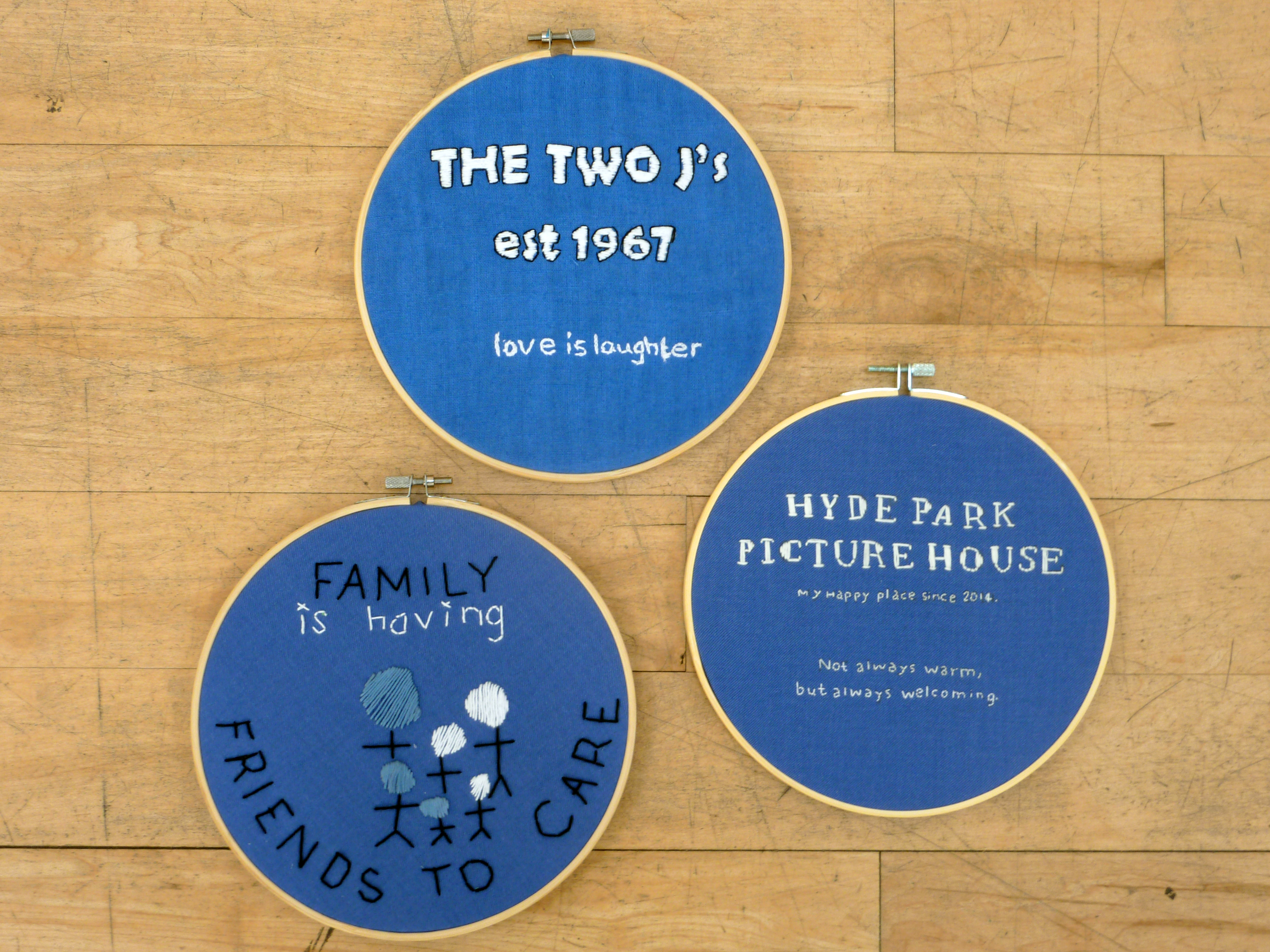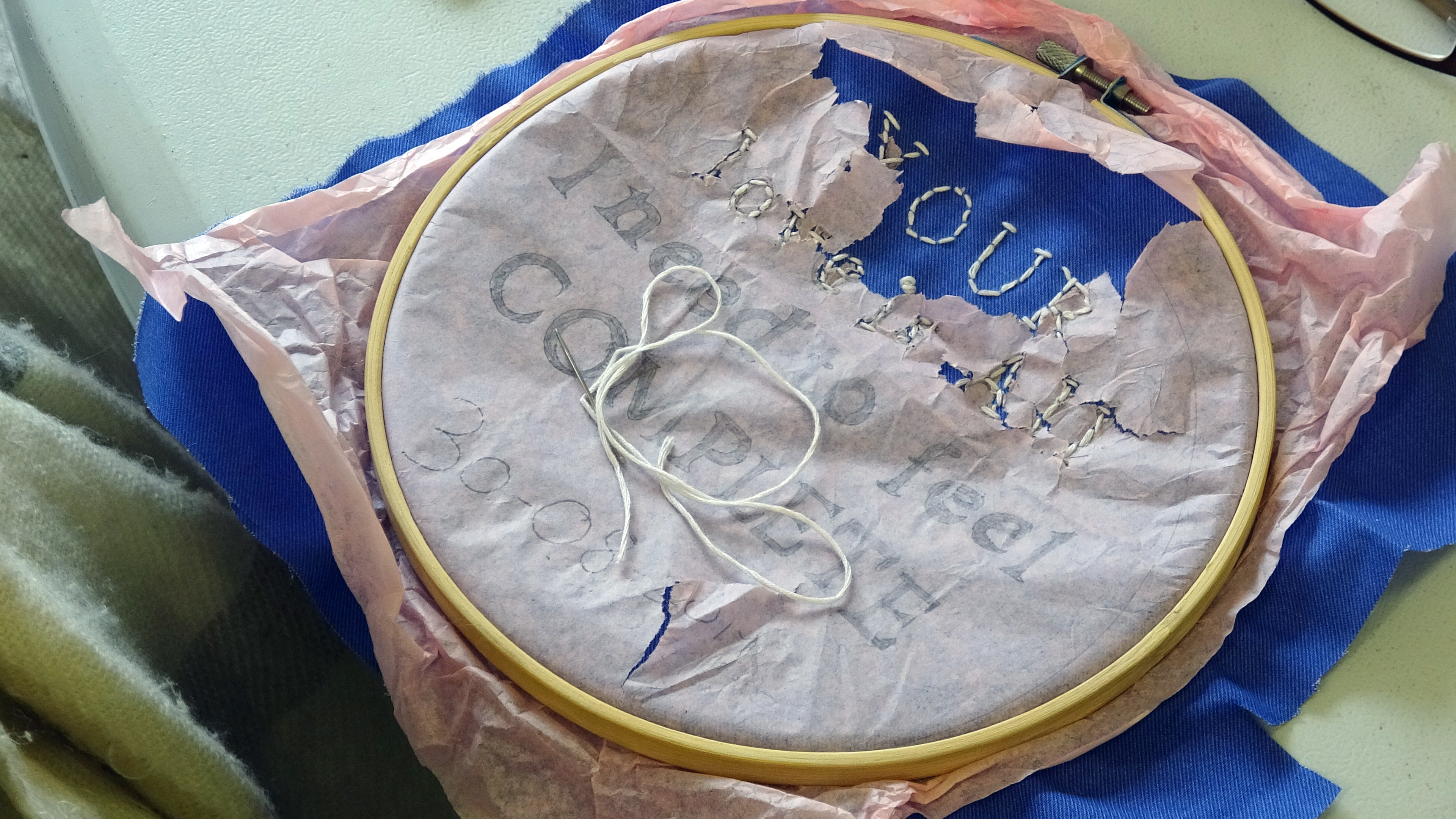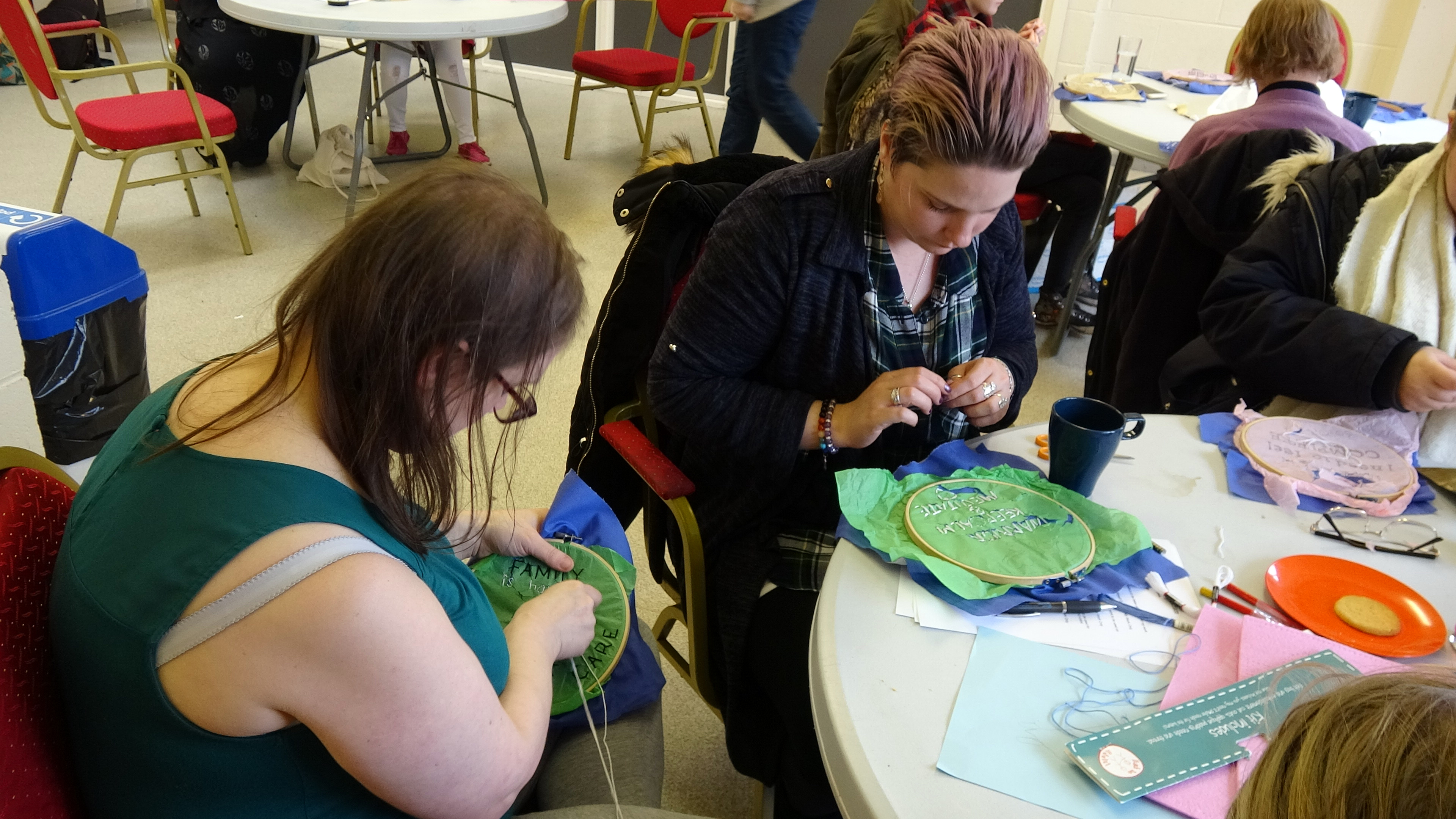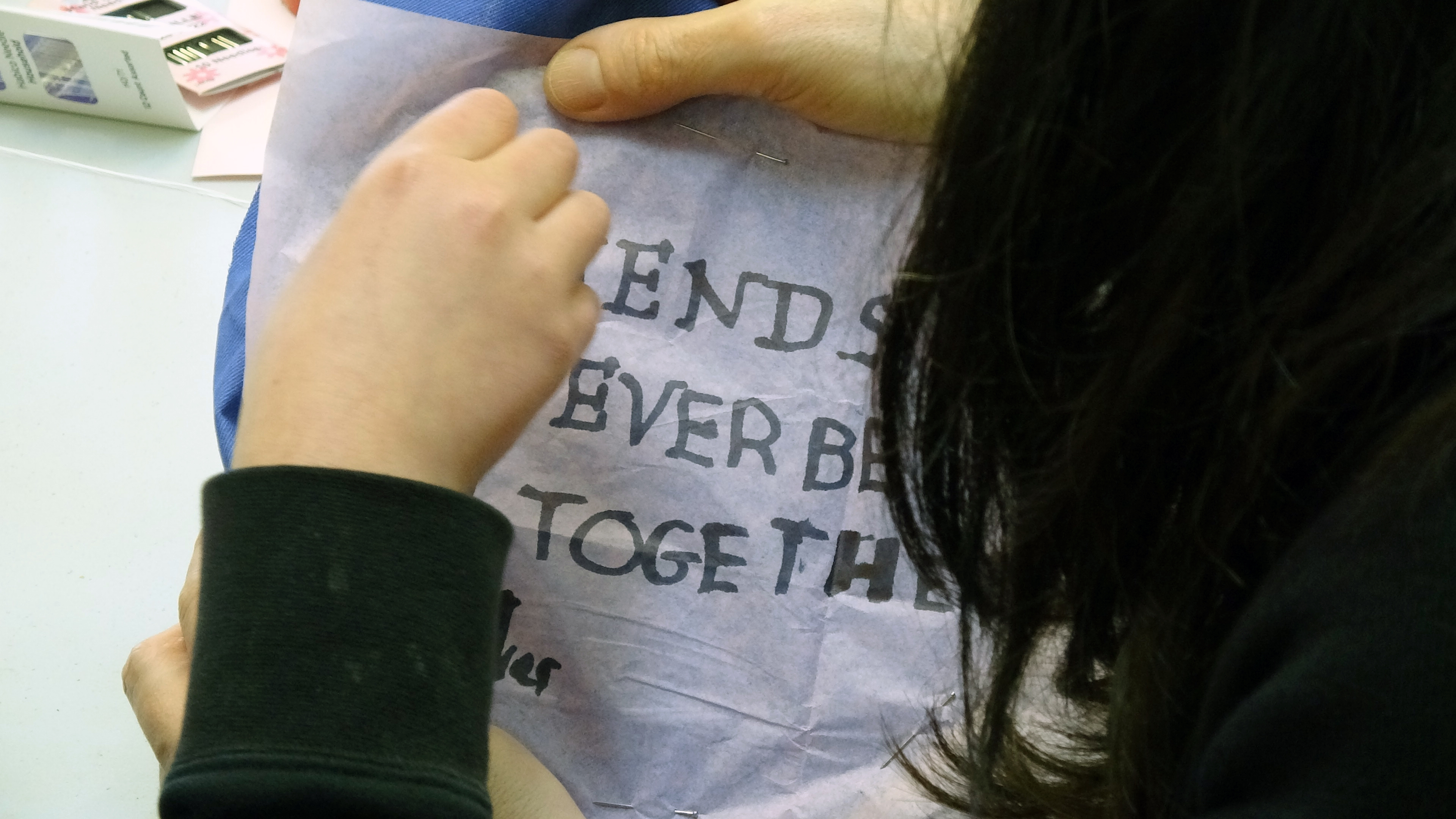The second session was on the 17th July, almost a month after the first, but the group were just as keen to get stuck in again as they were the first time. After speaking with Julia from Bradford College, we were keen to really focus on Bradford and it’s Blue Plaques in the second session. In the lead up, I put together some information on Bradford’s Blue Plaques (file below), stitched a hoop specifically for CommunityWorks, and created a simple feedback form for the participants to fill in if they wished. We also wanted to focus more on group activity and so brought back to big blue table cloth for collaborative stitching.
We presented the women with the blank blue table cloth and asked them to think about their favourite places within Bradford. The discussion soon began to snowball, after a few of the group members mentioned their favourite spots it encouraged others to start thinking of theirs too.

With the help from ESOL tutors and volunteers, we were able to hold small group discussions about the types of Blue Plaques that can be found within Bradford, using the examples I prepared and printed for the session as a talking point. This helped everyone understand the ideas and themes behind the table cloth a little better. Whilst speaking to one group member, June was told that she loves Bradford, that a family member lives in another UK city but she was not a fan, that Bradford made her feel safe.

I spoke with ‘S’, who was new to the Bradford area when she attended the first session in June. She was excited and proud to tell us that she had continued to work on her embroidery at home and had almost completed it. ‘S’ chose to include her Mosque on the table cloth because it was a calm, quiet place she felt at peace in a busy city. In the first session, ‘S’ was nervous about trying a new skill (embroidery) and was great at asking lots of questions and asking for support. In the second session, it was wonderful to see that her confidence in her stitching abilities had grown as she dove straight into adding to the cloth without hesitation.
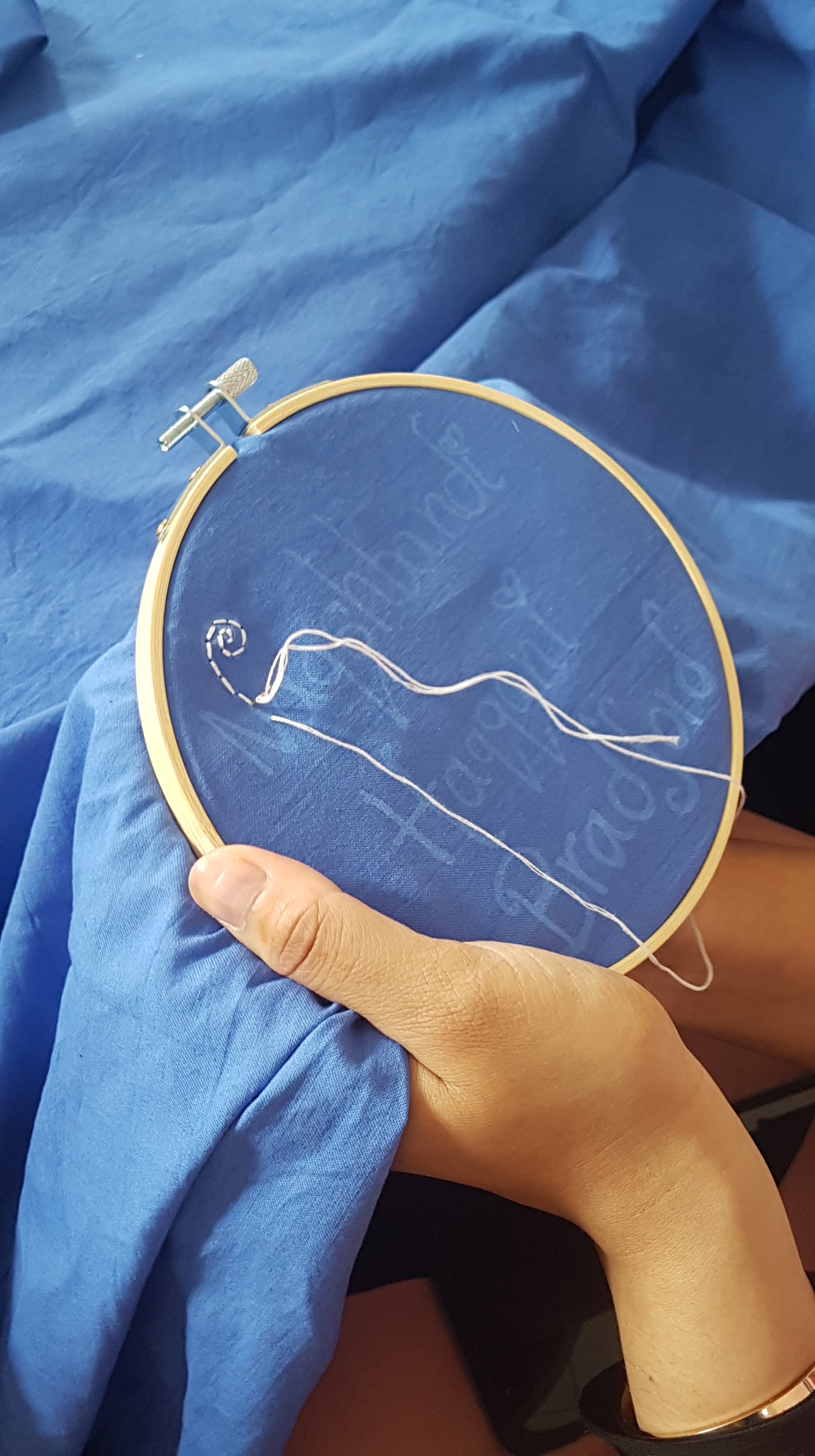
Some other examples added to the cloth were Peel Park and The Alhambra Theatre. One of the unexpected choices was a specific supermarket, where one of the ladies loves to do her grocery shopping. I think it is really interesting to have a place others may not consider anything special being highlighted on the cloth as a favourite place to visit.
In preparation for the second workshop, I also created a large scale Blue Plaque for CommunityWorks itself using freehand machine embroidery. June spoke to individuals and asked them to add reasons they keep coming back to the centre. At the end of the session, two of the ESOL group member’s spoke with Nabila and they would like to finish the embroidery on the Plaque over the summer and work together to do so, passing it between themselves to get it completed so that it could hang in CommunityWorks for visitors to see.
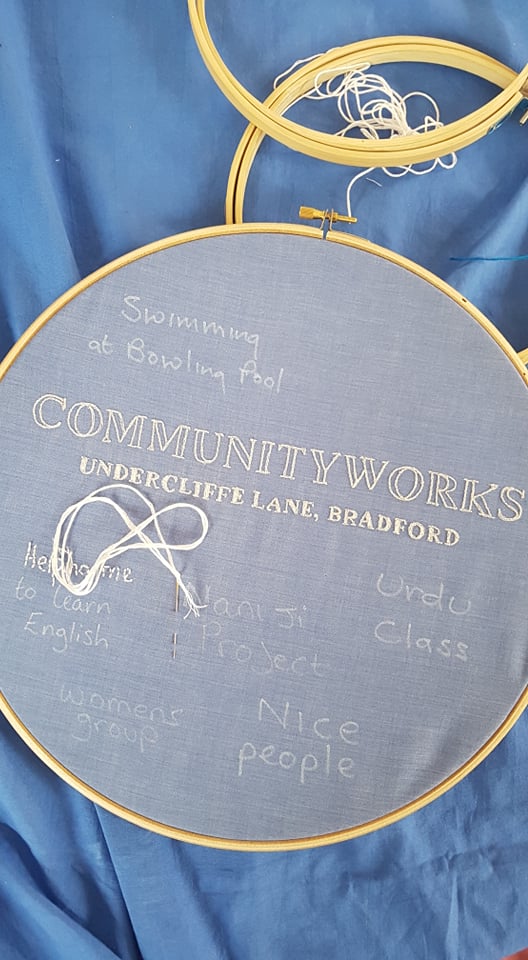
Other’s in the group opted to continue work on their individual Blue Plaques and were pleased to be able to take them home, along with the hoops for framing.
June and I had a great experience working with CommunityWorks and both their Women’s group and ESOL class. The work the dedicated volunteers and tutors do is amazing. CommunityWorks as a whole, those who work there and those who attend, is a prime example of how a community can come together to help one another out. They are a credit to Bradford and are examples of exactly why we wanted to start Blue Plaques of Intangible Experiences in this city.

